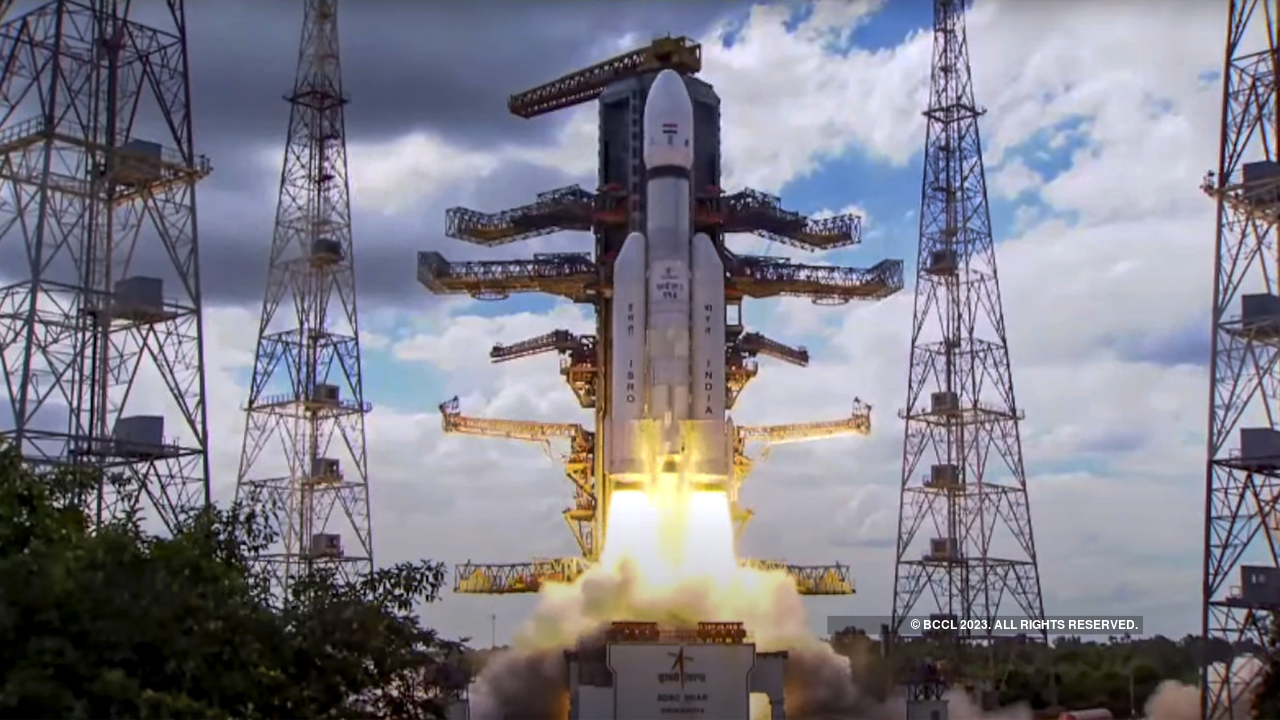A Historic Moment for India’s Space Program
India successfully launched Chandrayaan-3, its third lunar mission, from the Satish Dhawan Space Centre in Sriharikota on July 14, 2023. This achievement marks a significant milestone for India’s space program, with the mission set to land on the moon in August.
For India, the launch of Chandrayaan-3 was a momentous occasion. Since the 2019 Chandrayaan-2 mission, which was unable to land on the moon, it was the nation’s first lunar mission. The accomplishment of Chandrayaan-3 gives India’s space programme a significant boost and positions it well to compete with other spacefaring countries.
Objectives of Chandrayaan-3
The primary goals of the Chandrayaan-3 mission encompass the following endeavors:
- Accomplish a successful soft landing of the lander on the lunar surface.
- Deploy a sophisticated rover to conduct comprehensive exploration and analysis of the moon’s topography and characteristics.
- Undertake in-depth studies of the moon’s geology, mineralogy, and atmospheric conditions.
- Conduct extensive research to identify and assess the presence of water ice resources on the lunar surface.
Chandrayaan-3’s lander is known as Vikram in honour of Vikram Sarabhai, the pioneer of India’s space programme. The word “wisdom” in the Sanskrit name of the rover is Pragyan.
Challenges of Chandrayaan-3
It was a difficult task to launch Chandrayaan-3. The endeavour required a sophisticated spacecraft and launch vehicle, and the moon landing is a delicate process. The ISRO crew overcame these obstacles, though, and the mission was successfully launched.
The culmination of many months of arduous work and dedication on the part of the ISRO team was the launch of Chandrayaan-3. The failure of the Chandrayaan-2 mission was one of many obstacles the team had to overcome. However, the team was able to draw lessons from Chandrayaan-2 and launched Chandrayaan-3 successfully.
The Future of India’s Space Programme
Chandrayaan-3’s achievement is a significant boost for India’s space programme. The nation is now prepared to carry out future space missions with more ambition. These might involve creating a space station, sending astronauts to the moon, or even sending a probe to Mars.
India can be proud of Chandrayaan-3’s success. It demonstrates India’s importance in the international space competition and the hard work and dedication of the ISRO team.
The Scientific Importance of Chandrayaan-3
The Chandrayaan-3 mission has enormous scientific value. The mission will assist researchers in their efforts to comprehend the geology, mineralogy, and atmosphere of the moon. As a potential resource for upcoming space missions, the project will also look for water ice on the moon.
The scientific information gathered by Chandrayaan-3 will be of great value to researchers everywhere. The information will aid in the better understanding of the moon’s genesis and evolution as well as the planning of upcoming lunar space missions.
The Public’s Reaction to Chandrayaan-3
Chandrayaan-3 has received extremely good feedback from the general people. The mission’s accomplishment has been celebrated by people from all throughout India. Young people are now more motivated to pursue jobs in science and technology because to Chandrayaan-3’s accomplishment, which has also enhanced national pride.
Chandrayaan-3’s success represents a significant victory for India. India is now well-positioned to compete with other spacefaring nations thanks to the mission, which has also motivated young people to pursue jobs in science and technology. We shall learn more about the moon and its possibilities for future space travel thanks to the scientific data gathered by Chandrayaan-3, which will be of great use to researchers everywhere.
Impact of Chandrayaan-3 on the World
Chandrayaan-3’s impact extends beyond India, reaching the global scientific community. Its achievements hold immense value, providing invaluable data that will enhance our understanding of the moon and its potential for future space exploration.
The triumph of Chandrayaan-3 signifies the increasing significance of space exploration in the 21st century. As nations strive to lead in this domain, India has proven itself as a prominent player. Chandrayaan-3’s success establishes India’s role in the global space race, positioning the nation to actively contribute significantly to the field in the coming years.
Some additional details about Chandrayaan-3
The mission was executed at a cost of approximately $140 million, with both the lander and rover measuring about the size of a refrigerator. The lander carries six scientific instruments, including a camera, spectrometer, and magnetometer, while the rover carries five instruments, such as a camera, spectrometer, and seismometer. The mission is expected to last for one lunar day, equivalent to about 29.5 Earth days. The landing site, the South Pole-Aitken Basin, is the moon’s largest impact basin. Chandrayaan-3 is a collaborative effort between the Indian Space Research Organisation (ISRO) and the National Aeronautics and Space Administration (NASA).
Conclusion
In conclusion, the launch of Chandrayaan-3 is a significant moment for India, bolstering its space ambitions and positioning it favorably among other spacefaring nations. The mission’s success instills pride in India and reflects the diligent efforts of the ISRO team.
India’s future in space exploration looks promising. Chandrayaan-3’s triumph positions the country for undertaking more ambitious missions in the future. India’s commitment to advancing space exploration ensures that the nation actively prepares to make substantial contributions to the field in the coming years.

